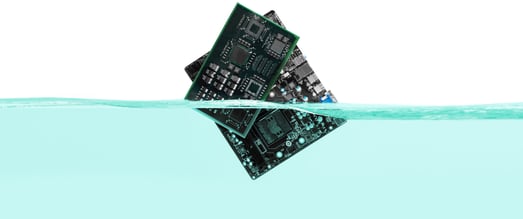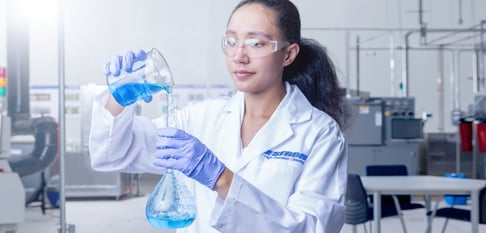 Your PCB cleaning process can be summed up by 3 simple questions:
Your PCB cleaning process can be summed up by 3 simple questions:
1. Are your boards getting clean?
2. Do you have to worry about damaging the components on the board?
3. Is there anything special you need to do afterward?
An ideal process has you answering “yes”, “no”, and “no”, and never having to think about those questions again. Unfortunately, nuance creeps in when you develop a new board, upgrade a piece of equipment, or experience some other change to your process. Maybe your happy “yes, no, no” is disrupted not by a change, but by discovering something better suited to your process, or something more efficient.
Your chosen cleaning agent can influence the answer to all three questions. The history of chemical cleaning agents is one of evolution, development, and iteration. With acidic (low-pH) rosin flux being the standard in the PCB industry, alkaline (high-pH) cleaning agents were a natural choice. They were able to combine with the flux, saponifying (fancy word for turning to soap) the flux and removing it from the boards and leaving it clean – a solid “YES” to our first question.
Strong alkaline cleaning agents are excellent at removing acidic contamination from the board (such as halide and carboxylic activators that make up the bulk of rosin), but they are also incredibly corrosive. Our happy “no, no” answers for questions two and three can be jeopardized by the corrosive nature of alkaline cleaning agents.
Cleaning chemistry had to evolve, and in its evolution corrosion inhibition packages were developed to protect sensitive metals like copper, aluminum, and nickel on PCBs. These inhibition packages helped mask the effects of alkaline cleaners on those sensitive metals. The high pH levels of the spent cleaning solution also required a “wastewater neutralization” step through dilution or acidification to balance out the strong bases. Without this step, the disposal of the spent cleaning solution could corrode inadequate infrastructure like sewer lines or cause caustic damage to the environment and wildlife (i.e. chemical burns).
 Jump forward to about ten years ago, and the hero of our story emerges the pH-neutral cleaning agent. This new generation of cleaning agents used molecular technologies that did not rely on the traditional acid-base interaction. The pH-neutral cleaning agent allowed for the effective cleaning of a wide variety of contaminants including newer synthetic resins – an emphatic “YES” to the first question. pH neutrality in combination with inhibition packages helped protect sensitive metals – a solid “NO” (remember, that’s good) to our second question. And because the pH-neutral cleaning agents weren’t caustic or corrosive, the spent cleaning agent does not need to be neutralized at the end of the cleaning process before disposal – another (good) “NO” to our third question.
Jump forward to about ten years ago, and the hero of our story emerges the pH-neutral cleaning agent. This new generation of cleaning agents used molecular technologies that did not rely on the traditional acid-base interaction. The pH-neutral cleaning agent allowed for the effective cleaning of a wide variety of contaminants including newer synthetic resins – an emphatic “YES” to the first question. pH neutrality in combination with inhibition packages helped protect sensitive metals – a solid “NO” (remember, that’s good) to our second question. And because the pH-neutral cleaning agents weren’t caustic or corrosive, the spent cleaning agent does not need to be neutralized at the end of the cleaning process before disposal – another (good) “NO” to our third question.
Soldering pastes and fluxes continue to evolve, and cleaning agents are along with them. Metal in PCB components continues to be sensitive, and the environment continues to dislike chemical burns. As the PCB industry continues to improve and change, so will the chemicals to clean it. But always with an eye toward the future of keeping our boards and our world safe.
Watch the video below to learn more about pH Neutral Cleaners
_1.png)

